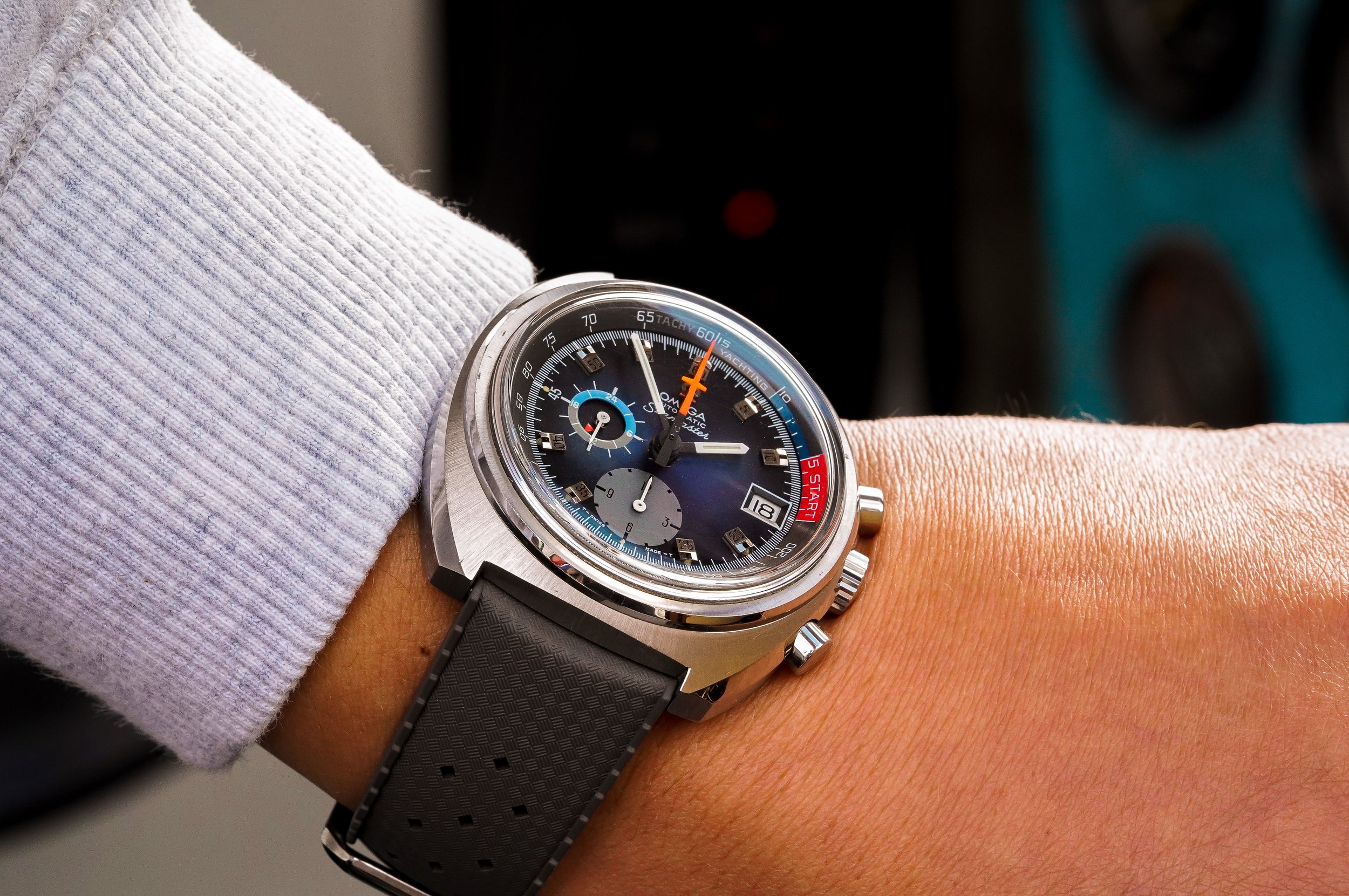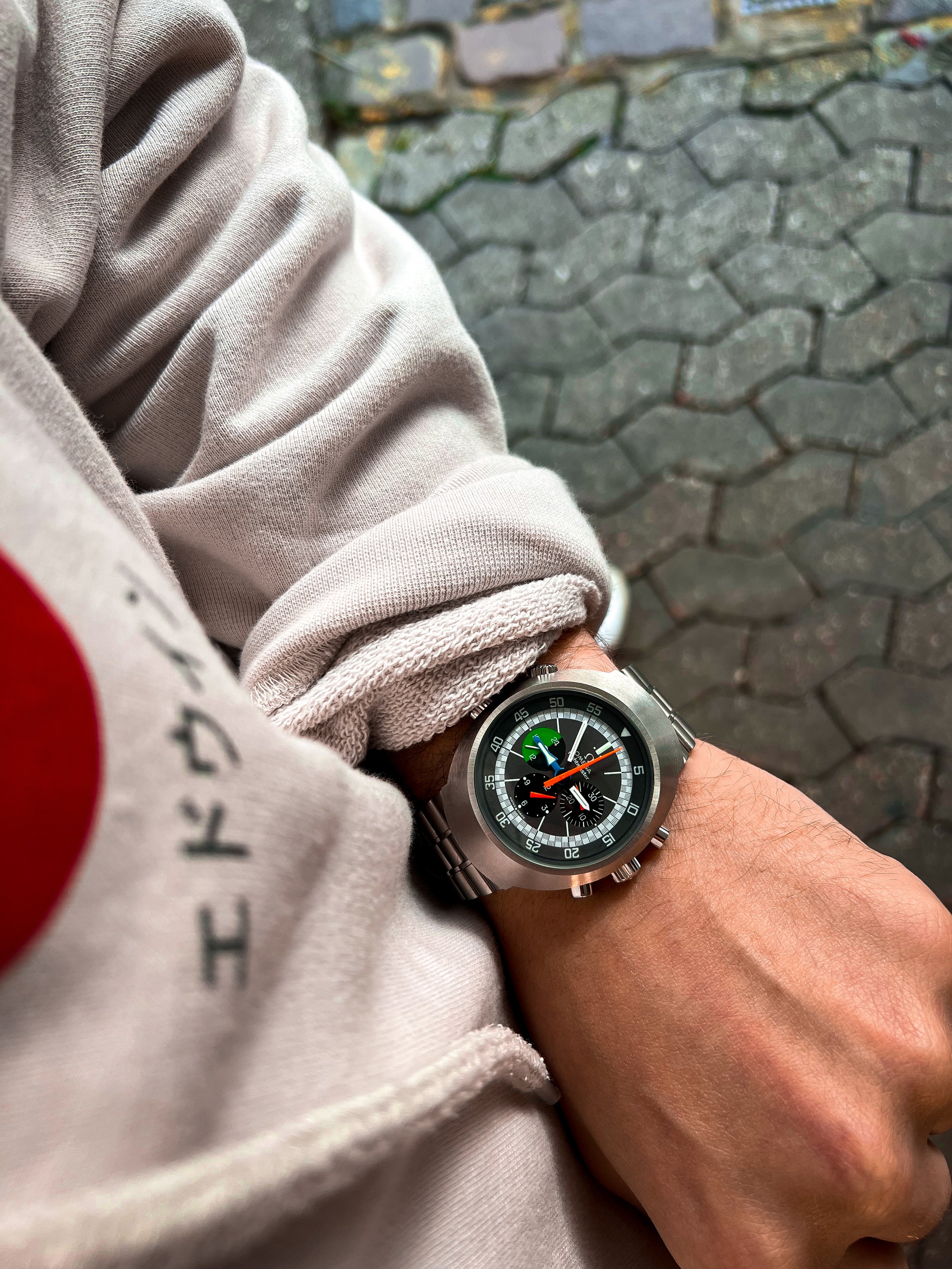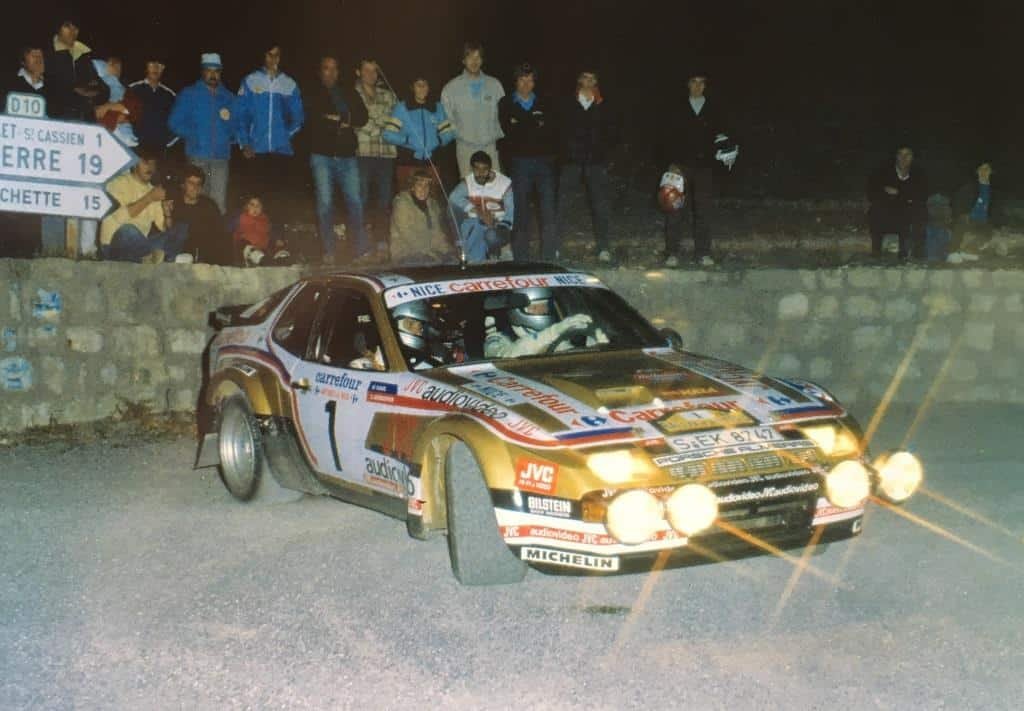Overlooked: Vintage Omega
Diehard Omega collectors might read this article with the nonchalance of someone who’s been privy to secret information, and is now seeing it emerge into the public domain for the first time after many years.
To others however, Omega is a one-watch brand. The Speedmaster is and has been such a dominant model in the brand’s line-up, that for the last 50 years or so you might be forgiven for thinking the Speedmaster Professional is the only watch the Bienne-based manufacturer has made that was any good. Spend time with anyone who’s been immersed in the Omega-sphere however, and you’ll be well aware Omega was responsible for manufacturing some of the most technically advanced, finely designed and robustly made sports watches of the 20th century.
Period print advertisement Omega Speedmaster Professional 145.022
Omega boutiques today are filled to the brim with advanced movements clad in shiny milled steel, or gold or ceramic - it’s the epitome of modern luxury brandedness and it’s immensely popular. Omega’s divergence from the manufacturer’s old values facilitated its’ venture into the modern luxury segment and can be sharply illustrated for the purposes of this article, by the PLOPROF 1200m released in 2007. Omega completely abandoned the essence of the original PLOPROF 600, dispensing with the monocoque case construction in favour of a screw-down back which later developed into a transparent display case-back among other arguably senile ‘luxury’ changes. The monocoque case was the whole point of the PLOPROF, and introducing a technically vulnerable point of ingress so owners could admire the actually quite nice, but mostly machine-made movement over a cocktail on a beach in Antibes was about as far from the original ethos as it was possible to be. They had tried to make the PLOPROF luxury and had instead succeeded in making it uncool. The irony is it was the PLOPROF’s unapologetic approach to function that made it cool in the first place…
Diver pictured wearing Omega Ploprof 166.077 on an Isofrane strap
It’s clear that Omega had shifted, like most other watch brands to form over function, to cater for a new and very different market. Compare Heuer to TAG Heuer (particularly post 2000), any number of Richemont brands to their former independent selves, or even a ceramic Rolex to a 5-digit reference and you’ll see a similar shift across every manufacturer. It’s been absolutely necessary to adapt as the wrist watch faded out of necessity and into opulence and it’s now also considerably easier to execute many of the manufacturing processes to a higher standard thanks to CAD and modern tooling. These brands are still responsible for making some stunning and technically brilliant timepieces, but it’s an extraordinarily different approach compared to watchmaking in the pre-quartz era.
So if you want a bonafide, honestly designed, well-made (sports) watch, just go and buy an old one right? Well it’s not that simple…
Vintage sports Rolex for example, is remarkably expensive. Even after prices have come back down to somewhere near sanity, you’ll pay 12,000.00 GBP or more for a basic 5513 reference non-date Submariner, yet that’s comparative peanuts when you consider the stratospheric Daytona values, which is practically Rolex’s only vintage chronograph model. The bracelets of 50 year old Rolexes are expensive, jangly and if you’re used to modern sports watches the bracelets can feel a little fragile; particularly worn originals. Heuer is somewhat similar and a more mainstream collector interest keeps pricing higher.
Vintage Omega is unusually different. By the time Rolex had brought out the venerable Submariner, the Omega brand was already 100 years old. They had significant experience in producing accurate time-keepers and perhaps it’s to this that we can credit the fine quality of the wrist watches they produced during the 1970s, an era which was arguably the peak of the development and design of the mechanical sports watch. Omega had their Speedmaster development well underway for the mutual benefit of NASA, which universally aided in the development of their chronograph technology. They had ties with COMEX thanks to their interest in commercial diving and sub-sea exploration, the pursuit of which led to the development of some legendary and increasingly collectible watches like the aforementioned PLOPROF 600 and PLOPROF 1000. It may have been a stretch to suggest at the beginning of this article that anyone truly thinks Omega’s a “one-watch brand”, but a brand that has such an extensive back catalogue is bound to harbour some absolute delights outside of the iconic well-known models; it’s this that’s particularly exciting. In fact, there are an abundance of them if you know where to look, and nearly all have been designed with real substance, receiving the trickle down across technology and acute design cues that went towards making the popularised models, well, popular.
The case of a vintage Omega sports watch usually consists of a bold silhouette hewn from steel, with a blend of mirror polishing and crisp fine grain brushing that rivals the finish of many watches produced today, and which are often sold at twice the price. At the time of writing 4000GBP will have a stunning vintage Omega Chronograph on your wrist (there’s one here on our store for example), currently a Tudor Black Bay Chronograph sits at 4640GBP. The Omega will run rings around the Tudor, guaranteed.
An Omega Seamaster Yachting 176.010 Regatta Timer
The case dimensions of vintage Omegas are beautifully modern, usually around 40mm which gives enough real estate to the dial and dial furniture to maintain legibility and functionality; a key point of design which reverberates across models and ultimately lays the foundations for why vintage watches like these feel so special. There’s a deep sense that these watches were conceptualised by people who loved their job and the product they designed, in other words; they had a design brief to meet and a soul to satiate, not a marketing team to please. The Mark series of Speedmaster is a wonderful display of this, you could tell Omega wanted to continue the development and evolution of their most successful chronograph, despite continuing to manufacture the chronograph that went to space, and beyond. If they just wanted to sell watches, they would have stopped with the Speedy Pro, but instead they continued R&D and conjured some of the most complex, well thought out dial, case and movement combinations ever assembled.
Speedmaster Mk4.5 | Credit: Hairspring Watches
Focusing on ergonomics and purpose while seamlessly incorporating the beautiful usage of colour, finishing techniques and proportion is something not many watches get right, yet it’s that blend that ultimately defines the sports watch. Most people owned and wore a single watch in the 70’s, and so Omega knew that a Regatta Timer for instance, had to successfully operate and survive on the deck of a yacht travelling at 20 knots through the Ionian Islands, but also that it had to represent the grace and class of the wearer and their vessel later, at the Yacht Club Adriaco. They bridged the gap between dress watch and tool watch - the ultimate purpose of a successful sports watch.
Dial and bracelets are eclectic and open to choice depending on the wearer’s aesthetic sensibility. Naturally some dials are rarer than others, depending on the model, but unlike the highly specialised Rolex scene these nuances tend not to have a drastic impact on pricing.
Stepping further into the tool watch segment from the sports watch centre-point opens up a myriad of more specialised pieces. These tend to dispense with the more decadent finishing techniques, swapping grained or sunburst dials for matte finishes and integrating even bolder colours and shapes into the most crucial aspects of the watch, from the striking sword hand on the SHOM (a watch made for France’s Service Hydrographique et Océanographique de la Marine) to the cleverly designed colour coordinated tips of the pushers on the Flightmaster. Omega collectors generally put higher values on watches in this segment, though not universally. Flightmasters can be bought for very reasonable money, though condition and completeness often varies heavily. Highly advanced watches like the ‘Big Blue’176.004 diving chronographs are rarer & more expensive.
Omega SHOM on a ‘Shark Mesh’ bracelet. Credit: Omega
Bracelets are good too. The 1162 is commonly seen across multiple watches of the era, and can be swapped with readily available service replacements if you’d like to a deeper sense of security on the wrist. Rarer multilink Holzer manufactured bracelets are a nice departure from the norm, conforming like cloth and sitting beautifully flat. The Omega mesh bracelets are particularly standout, ranging from 20mm to 24mm spans, they utilise a sprung clasp mechanism that operates like the buckle on an aeroplane seatbelt, and the clever rounding of each interfacing chain link makes it supremely comfortable to wear by venting the wrist efficiently in hot or humid weather. It’s yet another example why buying a properly designed, purposeful watch is so satisfying. People relied on them, sometimes to preserve their lives.
Movements range from manual wind calibres found in the Speedy Pro, to the venerable and advanced lemania based, Omega calibre 1040, 1041 & 1045 with a range of reliable and serviceable non-chronograph movements as well, most incorporating quickset date too, which wasn’t always a given at the time.
Flightmaster 145.013 on 1162 bracelet
Naturally condition affects pricing. You can seek out and pay a premium for complete originality and provenance or you can subvert the purists and have yourself an essentially new, refurbished 50 year old watch (there’s another article coming on this soon), or you can split the difference - it’s up to you.
The available diversity rounds out Omega’s vintage offering nicely for me. In period their variety and execution were the choice of highly notable individuals even outside of the astronauts, cosmonauts and Jacques Cousteau’s deep diving companions (if that wasn’t testament enough). Omega watches also graced the wrist of Ferrari’s Luca Montezemolo (Mk 2 Speedmaster), Porsche’s Walter Röhl (Mk3 Speedmaster, Silver Dial), and the creator of Jurassic Park, Michael Crichton (Flightmaster) to name but a few. Now the cognoscenti are heading back to Vintage Omega as a forgotten gem, so we’ll undoubtedly start seeing their watches on notable wrists again very soon.
Walter Röhl in the Porsche 924 at Rally D’Antibes 1981.
I’m interested to hear your thoughts and opinions on this. Have I missed the mark? Do you have a vintage Omega that you adore too? Is there another brand I could be sleeping on? Send me a message or leave a comment on Instagram @Peachy.Exotic.Watches or take a look at our latest arrivals in the store.
Agnelli / Montezemolo / Röhl










